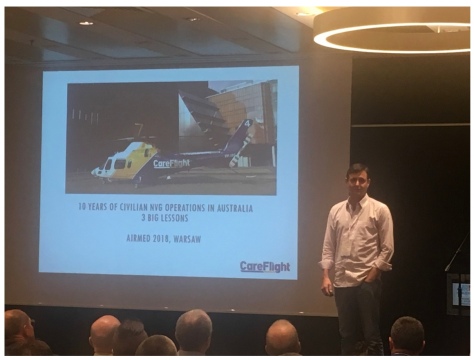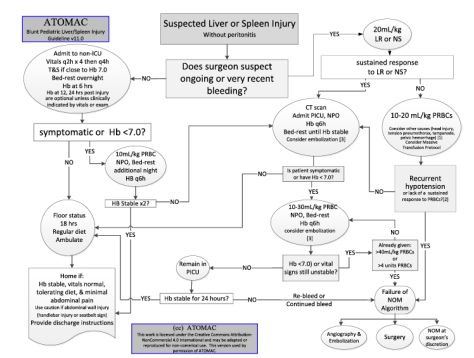OK it’s been a really long time. But it’s here. Dr Alan Garner returns with the wrap from AirMed Day 2, and it is absolutely not hot on the heels of the wrap from day 1. It’s good though.
Unfortunately day 2 of Airmed was notable for a complete absence of Russian designed helicopters. Fortunately there was enough of interest to keep me going. Comments for day 2 have also been supplemented by notes taken by my colleagues Captain Greg Ohlsson and Dr Toby Fogg which helped me with the concurrency conundrum so thanks to both.
Launch
Day 2 kicked off bright and early with Klaus Egger from ÖAMTC in Austria with a Safety Analysis of current HEMS accident trends in Europe. He noted that accident databases are very poor and it was difficult for him to quantify exact numbers. However he was able to deduce that the rate of accidents in Euro HEMS is static in real terms, though the fleet has increased by 25-30% so in terms of rate, it can be seen as a reducing trend. This supports the notion of upgrading the fleet to modern IFR capable, glass cockpit twins.
Far and away the most common two accidents were wire strike and Controlled/Uncontrolled Flight into terrain or obstacles (CFIT). There were a few other causes. He railed against the intrusion of voice activated terrain and wire database warnings (EGPWS/HTAWS) pointing out that they are fitted everywhere and still had not changed the accident rate. Indeed they provide significant distraction in the cockpit comms for HEMS crews.
He noted that in the CFIT incidents the collision was almost invariably with terrain that the crew already knew was there. For example an aircraft brushed its main rotor tips against a rock wall during a winch. The crew knew the cliff face was there but drifted just enough to strike it due to distraction. HTAWS provides no additional situational awareness in that situation and actively distracts the crew – which seems to be the common thread in these incidents.
The technology is just not helping us here. It was sobering to note the fatal crash of the Irish Coast Guard helicopter in the last 18 months involved the aircraft striking an island in poor visibility that was not in their mapping system. You could argue in this case that reliance on the technology set up the crash.
Also notable was the fact that not a single accident was caused by engine failure. Huge amounts of money and regulatory effort have gone into mitigating this risk over the last 20 years. It might be time to invest more in the risks that are actually killing crews. Having said that the accident rate is trending down – which shows that modern aircraft are a better safety proposition overall.
Next up was David Lockey from London HEMS on where are we heading in Prehospital Trauma Care. I would describe this as the usual line up of suspects; REBOA, ECMO, POC testing, imaging etc. To echo a point I have made on the Collective previously he concluded by asking whether we should do these things prehospital just because we can, as it seems we can do a lot.
Concurrent Activity
After morning tea the concurrent sessions kicked off. I went off to hear Lionel Lamhaut describe the Paris experience with prehospital ECMO. The logistics of this are not inconsequential. It takes a 6 person team; three to provide high quality CPR while ECMO is established and 3 to do the plumbing/EMCO bit. 7.5% of the time it fails for technical reasons. He also noted that they have moved into REBOA as well and have done their first zone one case, which has since been reported in Resuscitation.
I then had to run to another session to watch our own Captain Greg Ohlsson speaking on our ten years of NVG experience in Australia. Although some European operators such as REGA have been using the technology for much longer than we have CareFlight seems to have developed our own unique approach.
Greg outlined the three components of that; use of lots of white light as we approach the landing zone (we have installed additional lights all around our aircraft), a long slow approach, and what he terms “eye relief”. In this last point he noted that unaided hovering cues are superior as depth perception works, good cues need less cognitive processing and we can light the unaided look around and produce good unaided hover cues (by point one – lots of white light). Eye relief here means setting the goggles further away from the eyes so it is easier to look around them rather than through them.
The end result is that the crews look around the goggles more in the landing zone, depth perception is improved and less cognitive load is imposed on the crew. I doubt I have explained this well but please contact us in the comments section below and we will put you in contact with Greg if you have any questions.

Then it was another run between rooms to hear Herbert Schöchl from Austria on point of care testing, particularly around coagulation. He noted that there were POC devices already on the market that can deliver an INR very rapidly but they were not very useful in trauma coagulopathy as it is clot strength rather than time to clot per se that is the issue.
He then described some testing they had been doing on the TEG 6S that will give a measure of clot strength in 2mins. He sort of implied that it is small and light enough for prehospital (or at least interfacility transport) use, though local types who have seen it in action tell me it’s still a bit of a beast.
They had been testing the effect of vibration on the measurement as they were worried this would produce unacceptable artefact or disrupt the reading, but this turned out not to be an issue. You will understand why they were worried about this when you look at this picture – the device measures clot strength by measuring resonance frequency of the meniscus. It at least looks like we’re getting closer to a more mobile TEG or ROTEM system.

Dispatched to Dispatch
After morning team it was off to a workshop (in my favourite venue behind the bar) on HEMS dispatch.
There were two speakers here that grabbed my interest. The first was Kevin Hutton from the US who gave a very interesting perspective on appropriate utilisation from a cost perspective. Large bills for HEMS transport have been making the news a lot in the US recently with charges to individual patients of up to USD50,000! The reason is the reimbursement system. The HEMS companies cannot recover any funds from about 80% of the patients transported. So they have to recover the costs of these 80% from the other 20% and when you understand this the charges to the insured few start to make sense. Just part of the madness of the system that is healthcare in the US.
The other presented was from the East of England Ambulance Service. This was a system I had previously worked in and it has moved on a lot from when I was there eight years ago. I thought their immediate dispatch criteria for HEMS were spot on. They have been refining these for many years and Sydney could certainly learn from this.

Field Notes from Toby Fogg
While I was in the back of the bar my colleague Toby Fogg attended a session on medical competencies in HEMS – an area in which he has some interest. Here are his notes, faithfully reproduced for the reader:
“Competencies in the HEMS World – by Akos Soti from Hungarian Air Ambulance.”
He carried out a survey of self-reported competency using this scale:
- Fully competent
- Competent – proper knowledge/training, not a routine intervention, would/can do if necessary
- Partly competent – some knowledge/information but not properly trained; would try as a last resort.
- Non-Competent – no/minor knowledge of the procedure; would not perform.
LPR service – 88% consultants, 84% male, 80% age 30-50. 61% anaesthetics, 28% ED – very different from ours in Sydney. Occasional neurologist or trauma surgeon. Their self-reported competence is 1 or 2 on the above scale.
- Surgical airway 93% felt competent, 68% have done one.
- Chest decompression, 97% competent,
- USS 79% for vascular access, 79% for chest, 63% for RUSH and FAST
- Thoracotomy 40% , Resuscitative hysterotomy 30% competent and 7% had done one.
- HUET 44% competent.
Then Matthais Ruppert from ADAC was up: They carry out 50,000 missions per year and are daytime only. Only 40-60% of patients are transported with 10% interhospital transfers. Drs are on duty 2-4 days per month, much like Sydney and the service is mostly consultants so little turnover. Training involves simulation e.g. inflight deterioration and conflict resolution in the interhospital setting.
Jens Stubager Knusden, an Intensivist from Denmark ACRM instructor presented on the Danish model. Shift patterns: Doctors are on duty 3 days straight, pilot/ACM do one week straight, living on base as a team. The pilots trained to be medical assistants. There is a strong emphasis on Medical/Scenario Debriefing and then ACRM debriefing.
The final speaker was Andreas Kruger from Norwegian Air Ambulance. His theme was that the right skills and right tools are required to deliver excellence. They have a highly efficient tasking system – the medical dispatchers are able to view the telemetry from the road ambulance in order to aid decisions. He also talked of some of his research, looking at physiology mapping for the patient.
“The fact that many medical experts point to a variable, does not make it a good quality indicator – one needs to be able to get a meaningful and useable number. The variable must have values that have a clear ordering from not-so-good to very-good. It should have the potential for sufficient variation.”
He also discussed system wide performance mapping and quality indicators such as the airway registry for which he has published a series of Utstein-like Criteria.
Enough of the Field Notes
At the end of these concurrent sessions it was time for lunch. This was the first time that I recall seeing my colleague Dr Chris Cheeseman. This was odd as the Polish doctors I last saw him with had all been there for the first session at 8am.
I unfortunately had to catch a train for Berlin so missed the final clinical session. The news at the closing ceremony was that Airmed 2021 will be held in Salzburg. The Sound of Music Airmed. Can’t wait.
Notes:
If you’re into quality indicators, you might like this paper:
And would you like another chance to look at that paper reporting the first successful prehospital zone 1 REBOA? Then look here.




